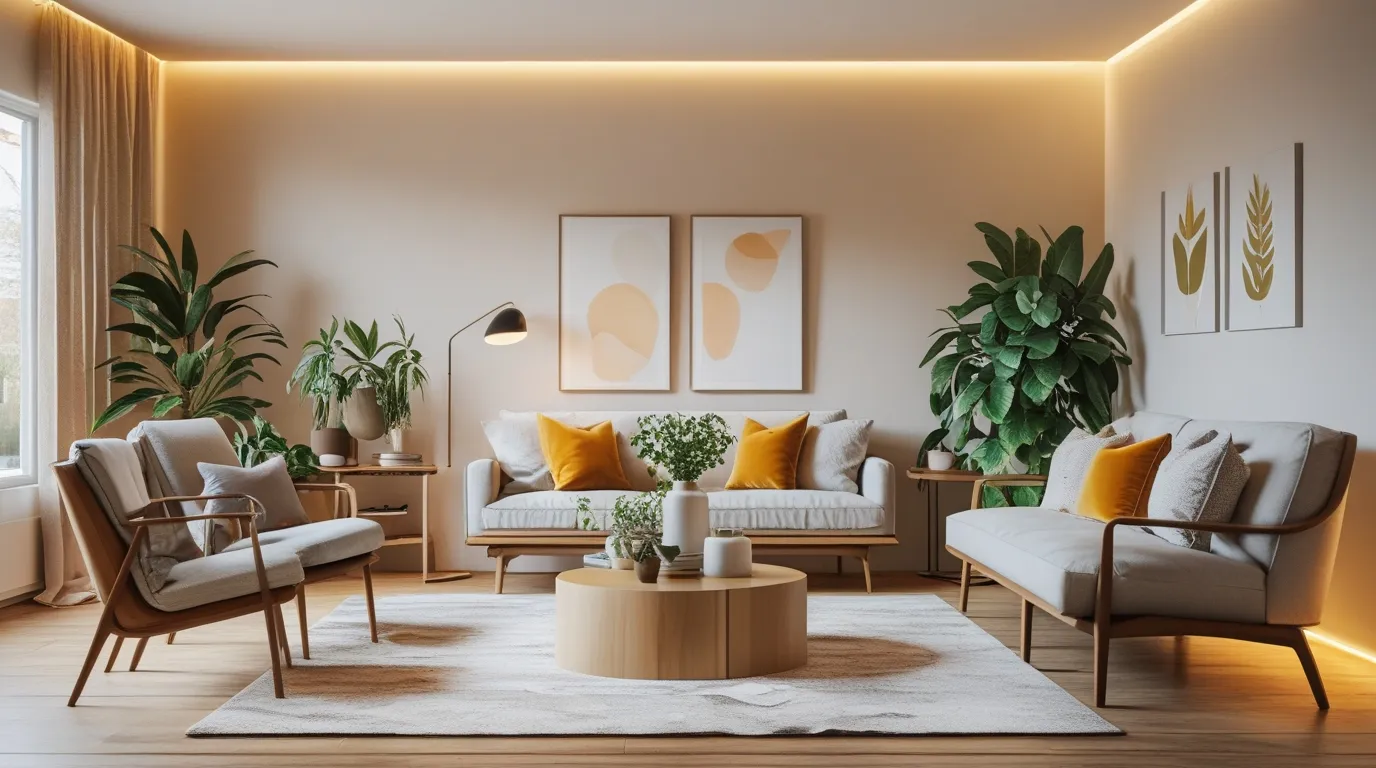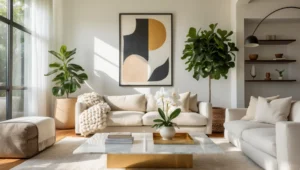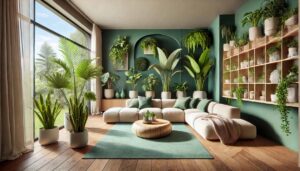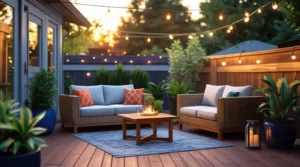Why house interior decoration matters
Want your home to feel like yours? Small changes can do that. House interior decoration isn’t only about expensive furniture or hiring a pro. It’s about choices that change how you feel when you walk into a room. In this article, I’ll show simple, budget-friendly ideas that make a real difference. Use these tips whether you rent, own, or are fixing up a room for the first time.
Quick before-you-start checklist
- Measure the room. Sizes matter.
- Pick one focal point per room. (A window, a sofa, a bed.)
- Choose a limited colour palette. Two main colours + one accent work well.
- Set a budget and stick to it. Small wins add up.
Living Room Makeovers—Big Effect, small cost
The living room sets the tone for the whole house. You can change it fast.
Layout and flow
Move furniture away from walls. Create conversation zones. A simple shift in layout can make the space feel larger and more welcoming.
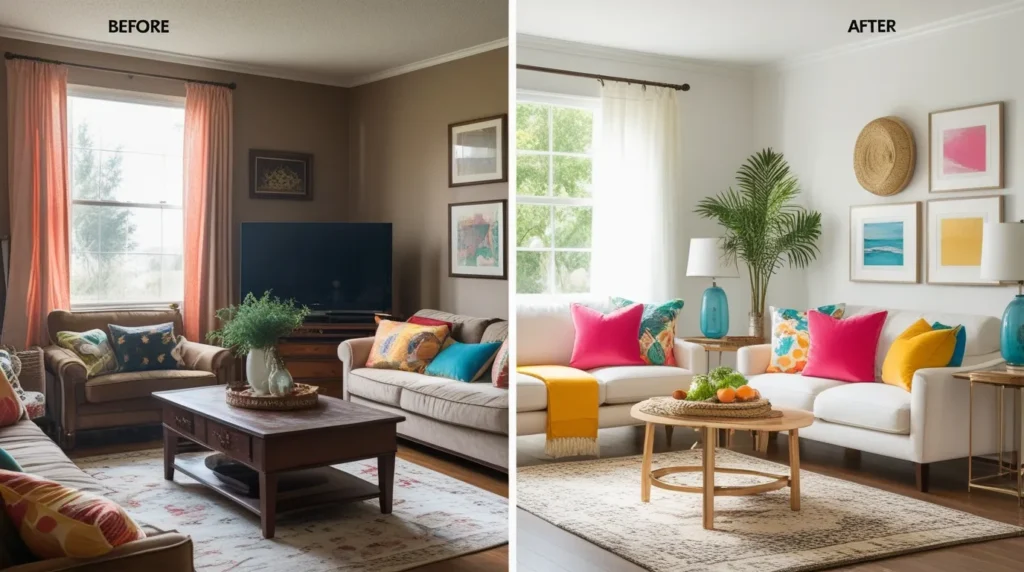
Statement soft furnishings
Swap cushions and throws. New pillows are cheap and lift the sofa instantly. Pick one bold pattern and repeat its colour elsewhere.
Rethink rugs
A rug anchors a space. If the rug is too small, the furniture looks like it’s floating. Aim for a rug that at least fits the front legs of your seating.
Bedroom Retreats—Design for calm
Bedrooms should feel restful. You don’t need to be a designer to make that happen.
Colour and mood
Cool colours calm you down. Warm colours energise. For a restful bedroom, use muted blues, soft greens, or warm greys.
Textiles and layers
Layer sheets, blankets, and throws. Soft textures make a room feel cozy. A single tactile change—like velvet cushions—can make the room feel richer.
Declutter for sleep
Clear bedside surfaces. Minimal clutter signals “time to relax.”
Kitchen Style and Smart Function
Kitchens need to be practical and pretty. The trick? Balance.
Open shelves vs hidden storage
Open shelves look lighter and allow you to display your favourite items. Hidden cabinets hide the mess. Mix both: open shelves for display, closed for function.
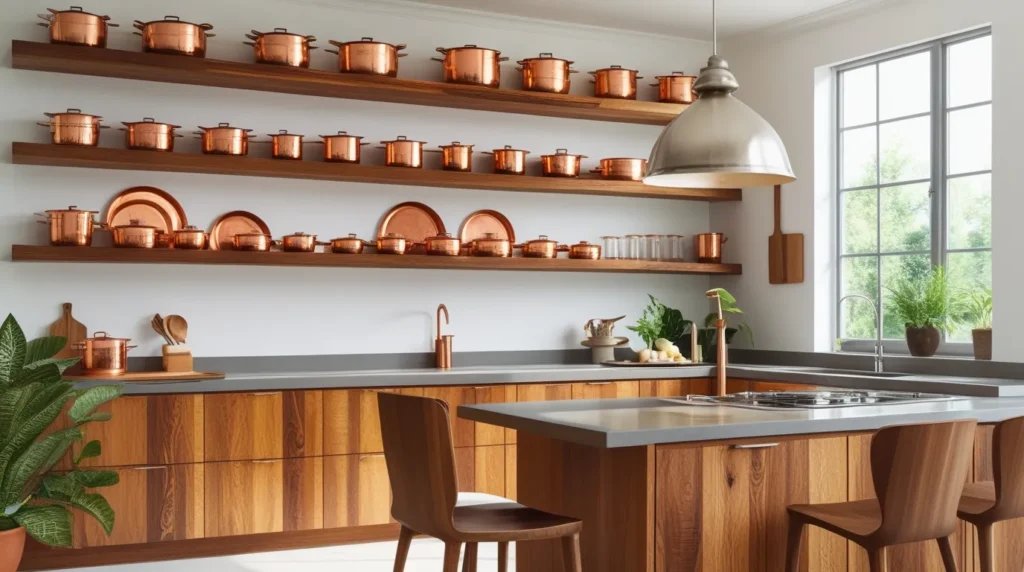
Small upgrades, big impact
Change cabinet handles. Add a peel-and-stick backsplash. Swap a dingy light fixture. These are affordable and noticeable.
Bathroom Bliss—Spa vibes on a budget
Bathrooms are small but powerful. Small updates here feel luxurious.
Tiles and grout
Clean grout makes everything look newer. Regrouting or using a grout pen is cheap and effective.
Mirrors and lighting
A larger mirror opens the room. Warm lighting near the mirror gives better skin tones than harsh overhead lights.
Textiles
New towels and a quality bathmat change the feel. Choose colours that match your palette.
Colour Palettes — pick a cohesive tone
A clear colour scheme ties a house together. Use the same 3–4 colors across rooms for flow.
How to choose
Start with a base neutral. Add one dominant colour, and then an accent. Repeat the accent in small touches across rooms.
Popular combinations
- Warm neutrals + green accent
- Cool grey + mustard yellow
- Soft beige + navy blue
Furniture Choices — what to buy and what to skip
Good furniture is an investment. But you can still look smart on a budget.
Buy used, buy smart
Secondhand shops and online marketplaces have hidden gems. Look for solid frames and add new cushions or paint.
Scale matters
Don’t cram big furniture into a small room. A slim sofa can be more useful than a bulky sectional.
Multipurpose pieces
Choose furniture with storage—like ottomans or beds with drawers. Function saves space and money.
Lighting Magic — Layers equal atmosphere
Lighting changes everything. Think in layers: ambient, task, and accent.
Ambient lighting
This is the general light. Swap a single bulb for a dimmable fixture to control the mood.
Task lighting
Use desk lamps, reading lamps, and under-cabinet lights where focused light is needed.
Accent lighting
Accent lights highlight art, plants, or architectural features. Small LED strips are cheap and dramatic.
Bulbs and temperature
Bulb colour matters. Warm bulbs (2700–3000K) feel cozy. Cooler bulbs (4000K+) are good for kitchens and work areas.
Wall Art & Decor—Show Your Personality
Walls tell stories. You don’t need a gallery budget to make walls interesting.
Gallery walls
Mix frames and sizes. Start with the largest piece, then arrange smaller ones around it. Keep 2–3 colours in the frames or mats.
Large single pieces
One large artwork over a sofa creates calm and focus. It’s easier than many small pieces.
DIY art
Paint a simple abstract canvas. Frame interesting fabric or wallpaper samples. Handmade decor is personal and cheap.
Flooring & Textures—Set the foundation
Flooring affects comfort and sound. You don’t always need new floors to refresh.
Layer with rugs
Rugs add warmth, reduce echo, and define spaces. Use runners for hallways and layered rugs for a textured look.
Textures to mix
Think wood, metal, woven baskets, and soft fabrics. Mixing textures keeps rooms interesting.
Indoor Plants & Green Decor—breathe life into
Plants improve air and mood. They also fill awkward corners.
Low-maintenance picks
Snake plant, pothos, and ZZ plant survive low light and forgetful waterers.
Placement tips
Group plants in odd numbers for natural balance. Use plant stands to create height.
Artificial vs real
Good artificial plants look lifelike and are low-maintenance. Use them in tricky light conditions.
Budget-Friendly Hacks That Look Expensive
You can fake a high-end look without breaking the bank.
- Paint a feature wall instead of the whole room.
- Swap out knobs and handles.
- Repaint kitchen cabinets instead of replacing them.
- Use removable wallpaper on one wall or inside a bookshelf.
- Frame fabric or wallpaper samples as art.
DIY Projects You Can Finish in a Weekend
Want a quick win? Try these.
Refinish a coffee table
Sand, stain, and seal. A weekend project with a big payoff.
Install a floating shelf
Easy to install and useful. Display books or plants.
Create a simple headboard
Use plywood, foam, and fabric. It looks custom and costs less.
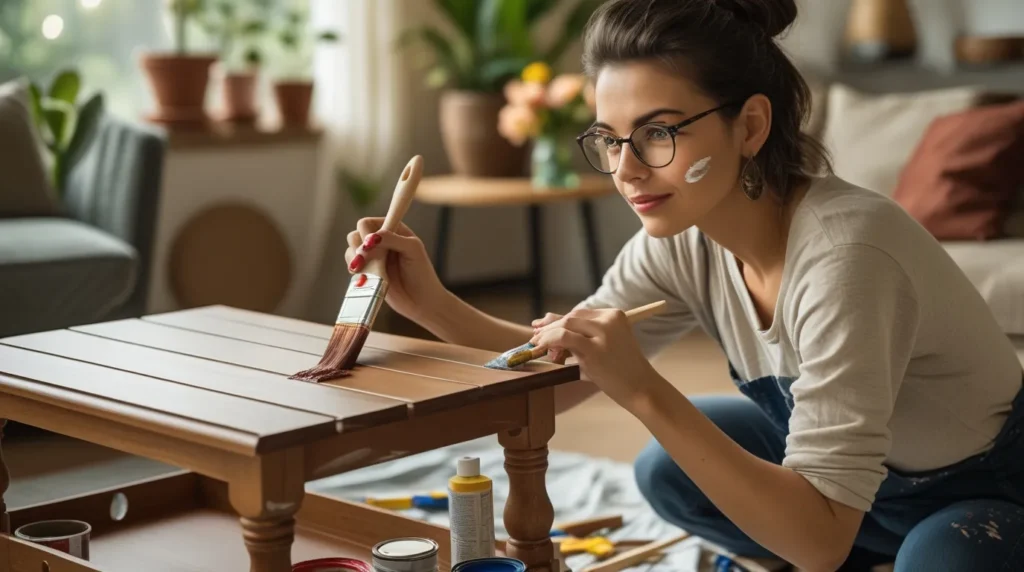
Paint a door
A bold door colour gives character for little money.
Common Mistakes to Avoid
A few things trip people up. Avoid these.
- Too many patterns at once. Keep balance.
- Ignoring scale. Small rooms need smaller furniture.
- Overmatching everything. Slight contrast is good.
- Forgetting lighting. Natural light matters—work with it.
- Skipping samples. Test paint and fabrics in the room before committing.
Quick 10-Step Room Refresh Checklist
- Clean and declutter.
- Rearrange furniture for flow.
- Add a focal point.
- Swap soft furnishings.
- Layer lighting.
- Introduce one big plant.
- Add art or a mirror.
- Update hardware (handles/knobs).
- Add a rug or two layers.
- Step back and edit.
How to keep a consistent style across the house
Match a few elements across rooms. For example:
- Repeat a finish (brass, black, or wood).
- Use the same throw colour in the living room and the bedroom.
- Keep a common rug tone in hallways to link rooms.
Consistency doesn’t mean everything matches. It means choices play well together.
Making Your House interior decoration Feel Like You
At the end of the day, house interior decoration isn’t really about chasing trends or copying Pinterest boards. It’s about creating spaces that feel right for you, rooms that tell your story. You don’t need a huge budget or a design degree to make your home beautiful. Sometimes, it’s as simple as rearranging what you already have, painting one wall, or adding a plant that makes you smile when you walk by.
The truth is, your home should make you feel something. Warmth. Comfort. Peace. Maybe even pride. Those feelings come from thoughtful little details, but a cosy throw, a lamp in the right corner or a photo that reminds you of a good day.
So start small. Pick one room. Move one piece of furniture. Try one new colour. You’ll be surprised how one change leads to another, and before long, your space starts to feel fresh and alive again.
And remember, decoration isn’t about perfection & it’s about personality. If your home feels like you, you’ve already done it right.
FAQs
Q1: How much should I budget for basic house interior decoration?
A: Start small. For a simple room refresh, $100–$500 can cover rugs, cushions, paint, and small fixtures. Bigger changes like new furniture raise the cost. Set priorities first.
Q2: Can I decorate on a tight timeline?
A: Yes. Prioritise high-impact items: layout, lighting, and soft furnishings. You can change a room’s feel in a weekend.
Q3: How do I choose the right colour palette?
A: Pick a base neutral, one dominant colour, and one accent. Test samples on the wall and view them at different times of day.
Q4: What are good rental-friendly upgrade ideas?
A: Use peel-and-stick wallpaper, removable hooks, rugs, and lightweight curtains. Swap switch plates and cabinet knobs (save originals to replace later).
Q5: How can I make a small room look bigger?
A: Use light colours, keep furniture low and minimal, use mirrors, and create vertical interest with tall plants or vertical shelves.

